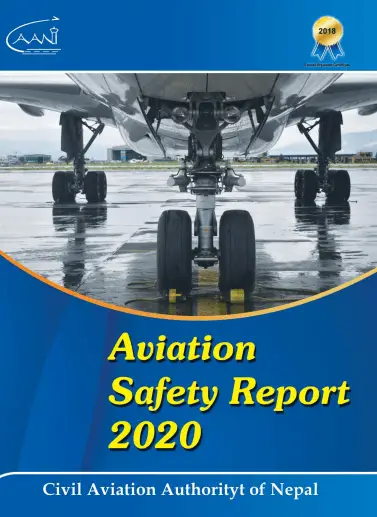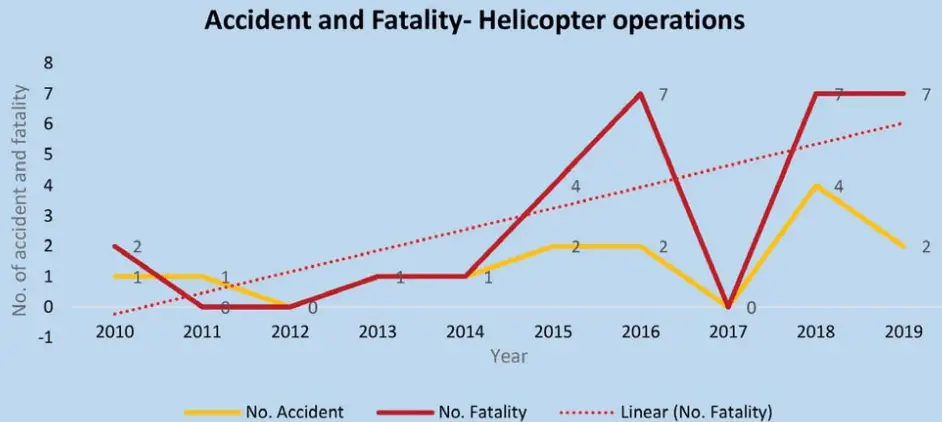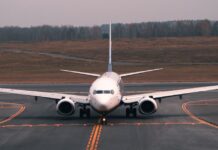Civil Aviation Authority of Nepal (CAAN), the aviation regulatory body of Nepal published the Aviation Safety Report 2020. The report was unveiled by the Honorable Minister for Culture, Tourism and Civil Aviation Yogesh Bhattarai at the CAAN’s office at Babarmahal, Kathmandu. The report is available for download at the official website of CAAN.
This Safety Report, 2020 is the fourth edition of the Aviation Safety Report that started being published in 2016. It provides a summary of safety activities, initiatives, and updates on safety indicators, reactive and proactive safety information, safety promotional activities of CAAN in the year 2019, and the progress on implementation of Nepal Aviation Safety Plan (NASP) 2018-2022.
Nepal Aviation Safety Plan (NASP), 2018-2022 has been developed in congruence with the Global Aviation Safety Plan (GASP), Doc.10004. NASP (2018-2022) has identified six areas of an operational safety risk, Controlled Flight into Terrain (CFIT), Loss of Control in Flight (LOC-I), Mid Air Collision (MAC), Runway Incursion (RI), Runway Excursion (RE) and Wildlife Strike (WS).
The Aviation Safety Report 2020 is based on Safety data (mandatory and voluntary) collected by state and operators, ICAO USOAP Audit Reports, and Accident Investigation conducted by MoCTCA. It also depicts Nepal’s status in USOAP Audit as well as in the field of SSP implementation.
CAAN Director General Rajan Pokhrel said, ” Before the COVID-19 pandemic, we were expecting significant growth in air traffic as the Government of Nepal had declared the Year 2020 as Visit Nepal Year. This anticipation stemmed from the average growth rates of international and domestic flight movements for the last ten years that have been recorded to be 8 percent and 2.3 percent respectively. Similarly, international passenger movement for the last 10 years has been registered to be 7.7 percent which is in line with the APAC growth rate whereas on the domestic front this growth rate is 9.6 percent.”
I hope this report will successfully serve the purpose of its publication and play a part in inculcating safety culture in the aviation stakeholders of Nepal, he added.

SOME HIGHLIGHTS OF THE AVIATION SAFETY REPORT 2020
Despite a decrease in international and domestic traffic movement in 2019 compared to that in 2018, there is a positive trend of increase in traffic movement in the last 10 years. The trend of fatality related to airplane accidents has registered a continuous steep drop. However, the fatality related to helicopter accidents has undergone a rise in trend during 2010-2019.
During the past ten years, there has been a continuous increase in helicopter operations. The abundance of remote topography in the country demands helicopter operations for logistic, rescue, and relief purposes in mountainous terrain. Similarly, growth in tourism has also led to an increase in helicopter operations. Since such operation carries a higher risk factor considering the geography and weather, the accidents related to helicopter operations still remains a challenge
in the field of Nepali aviation.

With regards to the category of aircraft, in the sector of an airplane, a higher number of fatal accidents and also that of fatality have been recorded to have occurred with the multiengine aircraft with 19 seats or less capacity. Such aircraft have witnessed 9 accidents with 135 fatalities in the past ten years. The second on the list is helicopter operations with 8 fatal accidents and 29 fatalities.

During the last ten years, aircraft operating in the STOL sector have suffered a comparatively more number of accidents than the aircraft operating in the trunk sector. Out of 20 accidents that occurred during the period, 17 occurred in the STOL sector rendering the STOL operation comparatively riskier.
Analyzing the causes of accidents with airplanes in the past ten years, the top three high-risk categories of accidents were CFIT, LOCI, and RE on the basis of a combination of factors such as a number of accidents and fatal accidents together with the fatality percentage witnessed by such category of aircraft.
DOWNLOAD THE AVIATION SAFETY REPORT 2020 HERE





